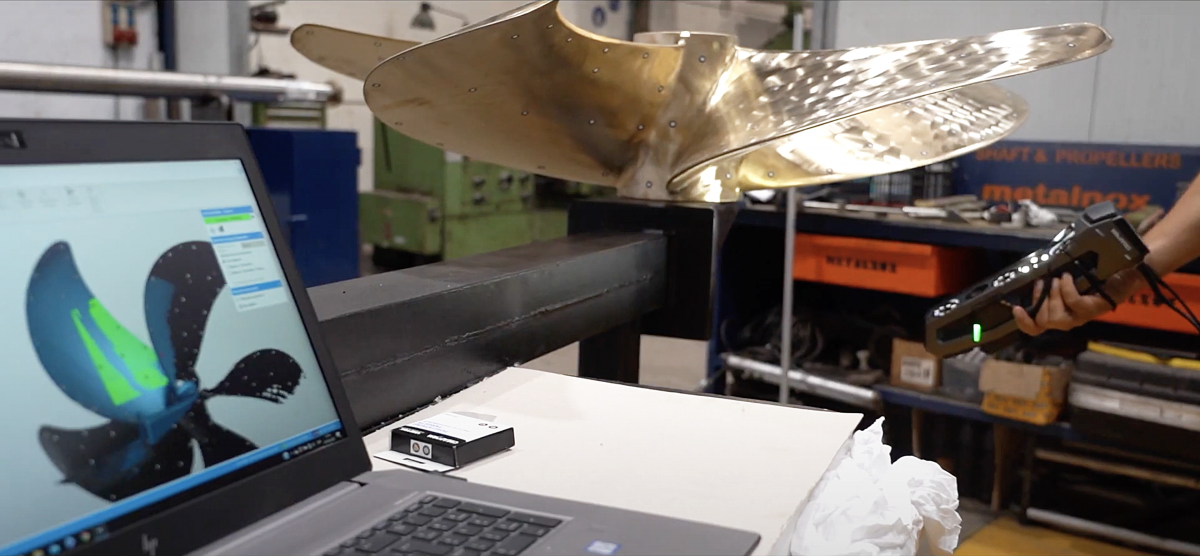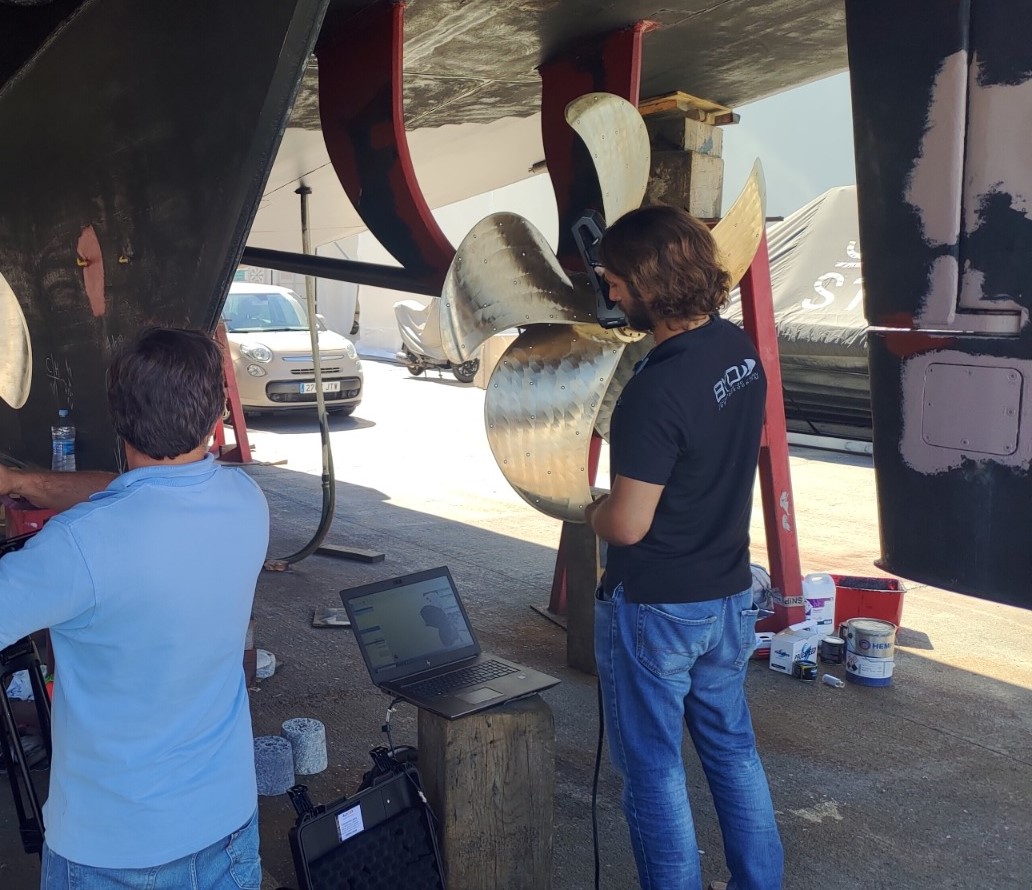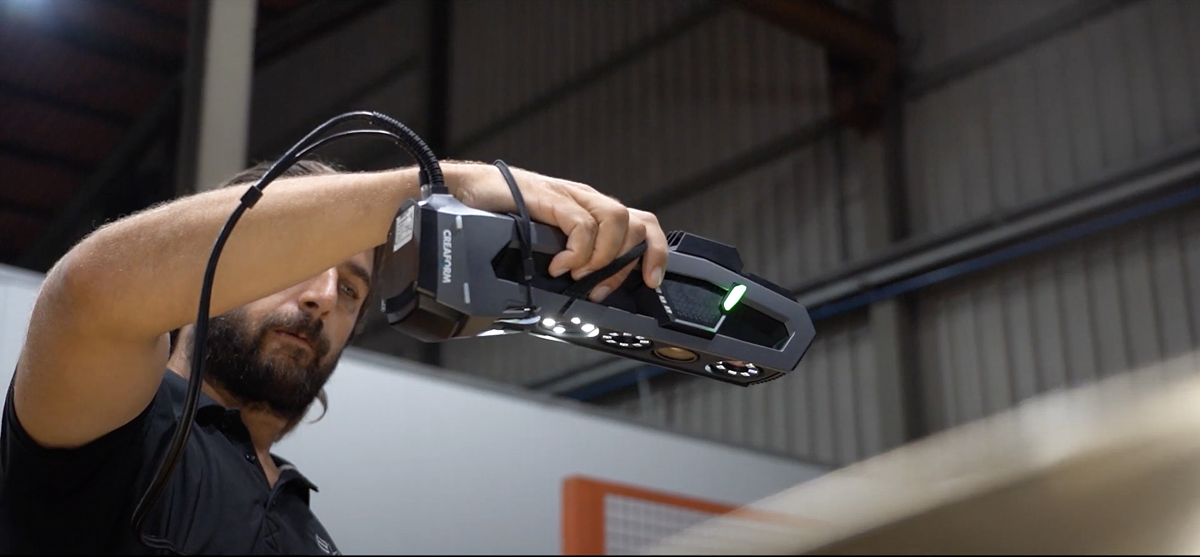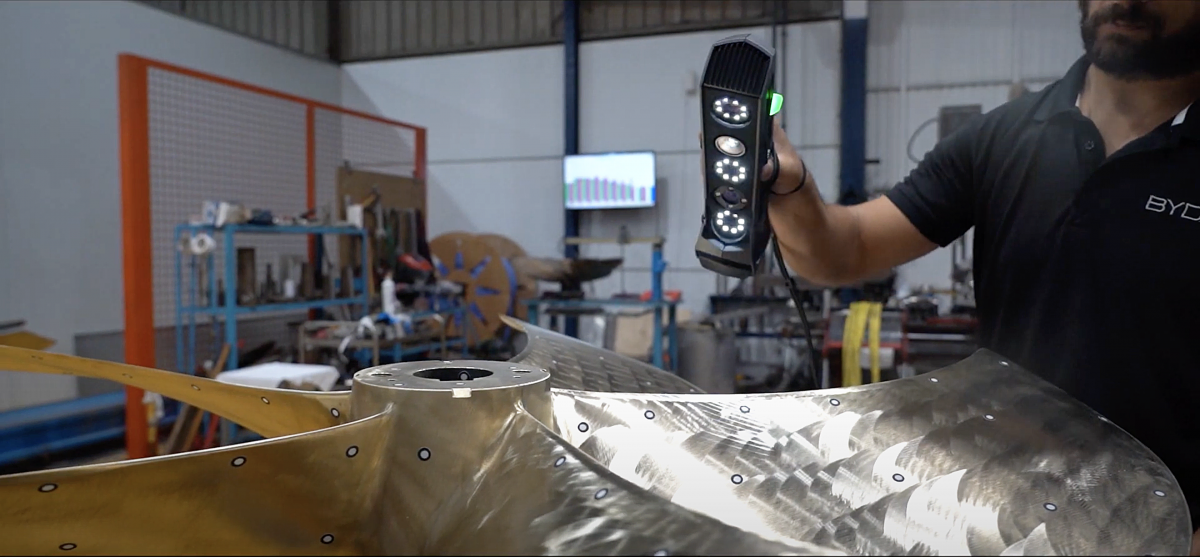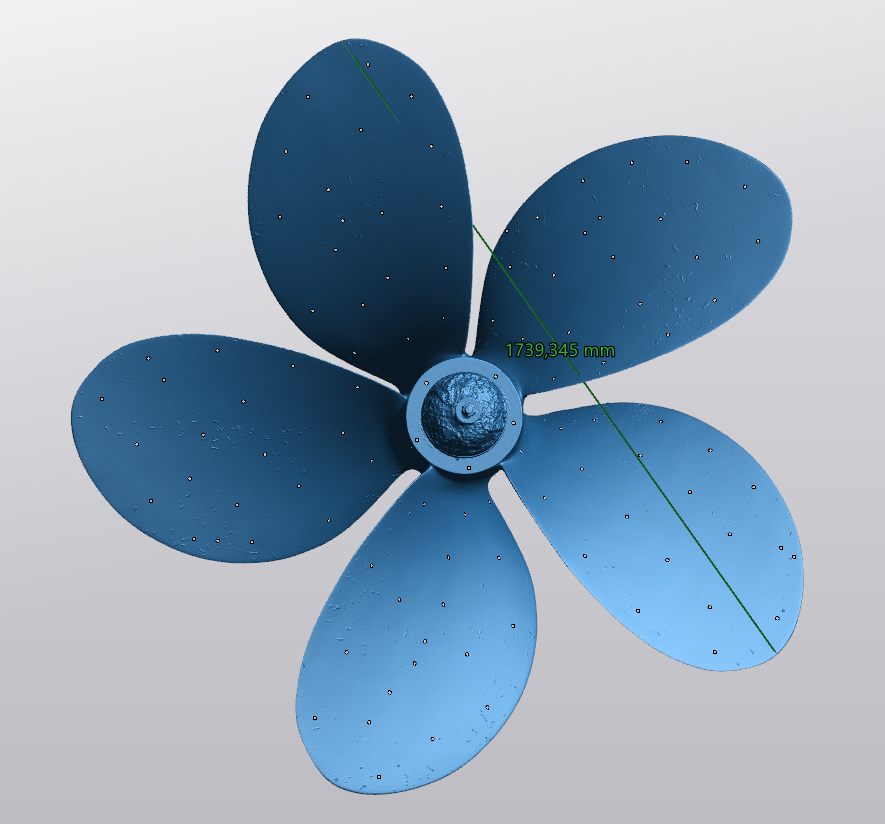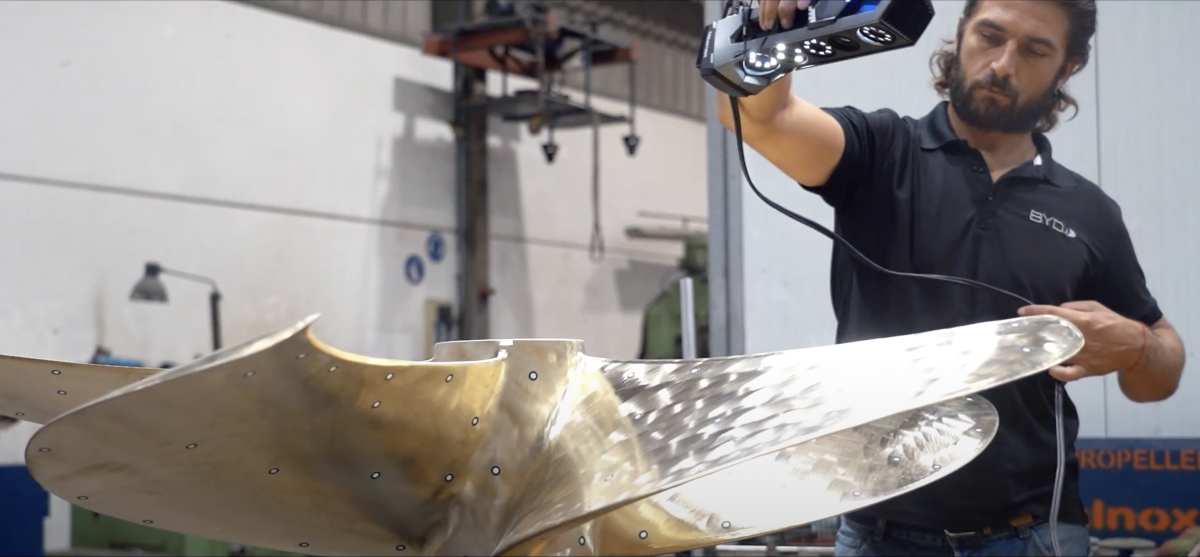- Article
- Related
Disassembling large parts, like propellers, and transporting them to the workshop is an expensive procedure that is not optimized to provide clients with a high-quality service. Luckily, technology now makes it possible to overcome this challenge (and many others) and to offer higher quality design and refit work.
Challenges: Knowing that large propellers are bulky and difficult to transport, how can a company assess whether these large diameter parts need repair without having to remove them from the boat?
Analyzing propellers to verify their class and efficiency, assess whether they need repair, and identify which areas must be restored are tasks for professionals. To carry out their assignment properly, they need a technology that allows them to digitize all the information and process it for repairs, testing, and checking. They need a portable instrument that can be brought easily to the marina and used in outdoor environments with fewer targets, which facilitates measurement setup and acquisition.
The complex geometry of nautical parts traditionally makes measurement a difficult task. How can a company get precise data with a level of detail to a hundredth of a millimeter (0.100 mm)?
Due to the non-planar shapes of a yacht, taking measurements with traditional methods can quickly become work based on assumptions. Indeed, classic instruments, such as a measuring tape, a vernier caliper, or pieces of cardboard, are not suitable for measuring the organic and complex forms commonly seen on boats. Without the peace of mind that comes with precise measurements, most design and refit works need to be done directly on board.
How can an engineering team in charge of yacht design and refitting avoid doing all the work on-site in confined spaces with limited resources?
When kept out of the water, boats are typically stored in cramped spaces. Transporting them long distances and at a high cost is not always an option if the workshop is far from the water. Therefore, the design company must be equipped with tools and processes that enable the engineering team to build parts away from the boat, in a factory with perfect conditions, and then assemble them on board once the design work is complete and approved.
In order to support sustainability by being as close as possible to zero emissions, which technology can help save time and money on transport, thus reducing the environmental footprint?
Removing the propellers, preparing them, loading them on the transport, taking them to the workshop, checking them, and making the way back to the yacht club—all these tasks take time and cost money. Conversely, leaving the propellers in place and using a prescribed solution to take measurements and perform verifications on site is more economical, allowing companies to save up to 90% of their previous costs, depending on the type of propellers.
Solution: Portable, High-Resolution, Versatile, and Fast 3D Scanners
Portability means the ability to bring the 3D scanner wherever measurements are required without having to remove or disassemble the part. It also means the capacity to use it in outdoor environments, where light and reflectivity are difficult to control.
High-resolution 3D scanners allow engineers to acquire the quality and quantity of data required to offer high-end design and naval architecture services. The high level of detail comes from the 3D scanner’s high-resolution cameras for geometry and the color camera for texture, providing superior scan quality.
Versatility means the capacity to measure any part, regardless of size, shape, material, surface finish, and complexity. This is made possible with advanced optical technologies and limitless scanning volumes.
Speed means the ability to accurately scan a 1m diameter propeller in 30 minutes, or the interior cabin of a yacht in 45 minutes. This fast acquisition is made possible with the instant mesh feature, where the generated mesh is already lightened and processed, ready to be seamlessly integrated into CAD or 3D printing software.
3D scanners, such as the Go!SCAN 3D, as well as the software platform VXmodel, are good examples of these portable, high-resolution, versatile, and fast 3D scanning solutions.
Benefits: With portability, high resolution, versatility, and speed, boat propellers, and interior cabins are precisely measured before checks and refit work.
3D scanning provides engineers with the peace of mind that their measurements are precise and their data is accurate. This is priceless for a company working in partnership with yacht builders or directly with yacht owners.
- Flexibility to Go Anywhere
With a handheld 3D scanner, there are no limitations. The scanning session can happen anywhere. As long as the propeller is out of the water and free of the harness, engineers can perform the scan, and an hour later, they are ready to go back to the workshop and analyze the data. Moreover, not only can the 3D scanner be used to check the part, but it can also be used to measure the interior space prior to a redesign phase. - Better Design Process
Starting with precise measurements is key to a successful design phase. With 3D scanning, the design process can occur away from the boat, in a factory with perfect conditions, and then the assembly can take place on board once the design work is complete and approved. When the design phase is based on accurate data, engineers are fully confident that their design will work in the production phase. - Assurance of Perfect Refit Work
3D scanning technology plays an important role in successful refit projects. It allows for the dimensions of a specific area of the boat to be measured precisely, regardless of the complexity and the geometry. Again, precise measurements are the prerequisite for perfect refit work that can be seamlessly planned and distributed through different contractors.
Client: Bravo Yacht Design Group
Based in the Spanish yachting hubs of Barcelona and Palma de Mallorca, Bravo Yacht Design Group offers a complete design and naval architecture service for new constructions as well as refits, working in partnership with yacht builders or directly with yacht owners themselves.
Having earned its place in the yachting community, BYD Group works on the full spectrum of vessels, from smaller watercraft to superyachts, as well as both sailing yachts and motor yachts, and has a number of international awards to its name.
Thanks to the company’s extensive in-house skillset and investment in the most sophisticated design technologies available, BYD Groups is able to support a yacht through its entire life cycle, from the earliest concept drawings with clients, the construction and the delivery phases to the annual maintenance, periodic refits, and full-scale upgrades.
With the goal of making their clients’ wishes a reality, the company needs the best equipment offered on the market. “We believe 3D technology to be the only way to be precise and to have top quality products, thus reducing overall costs,” explains Tià Simó, co-founder and partner at BYD Group. “We did benchmark many of the laser scanners available, but the only one giving us the confidence on the accuracy of the measurements was Creaform.”
“All our projects using 3D scanning have been always a success,” adds Tià Simó.
NEED MORE INFORMATION ABOUT OUR SOLUTIONS?

